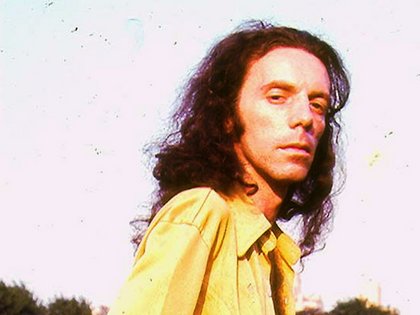

The hanging sculptures gradually grew in scale and later works consisted on many hanging sections forming the overall work, as a spatial development of his first experiments with painting. Oiticica was specifically interested in what creates culture.Ĭolor became a key subject of Oiticica's work and he experimented with paintings and hanging wooden sculptures with subtle (sometimes barely perceptible) differences in colour within or between the sections. Clark and Oiticica transitioned into conceptual art dealing with ideas of the human body and culture. Oiticica questioned traditional ideas of aesthetics and art practices by considering the spectator and ideas of real space in his work.

These small square wooden plaques (30 x 30 cm) were not made to represent light rather Oiticica sought to embody it.

He painted monochromes entitled Invencoes (Inventions) in 1959. : 100–105ĭuring Oiticica’s Neo-Concrete period, he sought to “escape the constraints of painting while remaining in dialogue with it” by utilizing color in new ways. The artworks themselves became akin to living organism rather than static forms they were made to interact with viewers. Neo-Concretism focused creating an awareness within the spectator of their spatial relationship with the artwork. The Neo-Concrete Movement rejected the objective nature of Concrete Art and sought to use phenomenology to create art that "expresses complex human realities." This was stated in the manifesto written by Amílcar de Castro, Ferreira Gullar, Franz Weissmann, Lygia Clark, Lygia Pape, Reynaldo Jardim, Theon Spanudis and published in Rio de Janeiro in March 1959 called Manifesto neoconcreto. In 1959, he became involved in the short-lived but influential Neo-Concrete Movement. Oiticica's painting quickly gave way to a much warmer and more subtle palette of oranges, yellows, reds and browns which he maintained, with some exceptions, for the rest of his life. His early paintings used a palette of strong, bright primary and secondary colours and geometric shapes influenced by artists such as Piet Mondrian, Paul Klee and Kazimir Malevich. He was a member of Grupo Frente, founded by Ivan Serpa, under whom he had studied painting. Oiticica's early works, in the mid-1950s, were greatly influenced by European modern art movements, principally Concrete art and De Stijl. Starting in 1954, Oiticica attended courses at Museum of Modern Art, Rio de Janeiro, studying under Ivan Serpa. Oiticica enrolled in art school at the age of 16 years. Oiticica and his brothers attended Thomson Elementary School. while their father worked at the National Museum of Natural History. During this time, from 1947 to 1949, the family lived in Washington, D.C. Oiticica and his brothers were taught at home until their father got a fellowship at the Guggenheim Foundation. His grandfather was a well known philologist, who studied literary texts and written records, and published an anarchist newspaper called Ação Direta.

He was also an avid photographer, creating experimental photographs that were new to Brazil. His father taught mathematics, was an engineer, entomologist, and lepidopterologist, a scientist who researched butterflies. Oiticica's family was educated and involved in liberal politics. He had two younger brothers, architect César Oiticica, and Cláudio Oiticica. Oiticica was born in Rio de Janeiro, Brazil to mother Ângela Santos Oiticica and father José Oiticica Filho. Oiticica was also a filmmaker and writer. Hélio Oiticica ( Portuguese: J– March 22, 1980) was a Brazilian visual artist, sculptor, painter, performance artist, and theorist, best known for his participation in the Neo-Concrete Movement, for his innovative use of color, and for what he later termed "environmental art", which included Parangolés and Penetrables, like the famous Tropicália. Spatial Relief (red) REL 036, Tate Liverpool


 0 kommentar(er)
0 kommentar(er)
